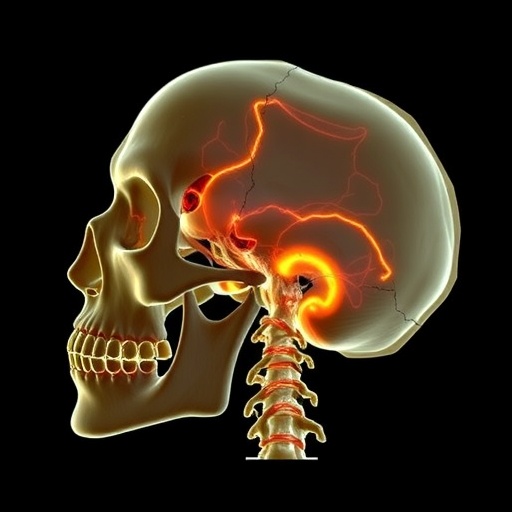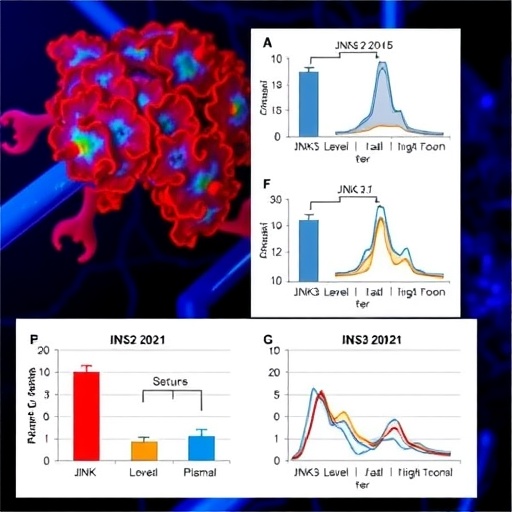In the intricate world of forensic anthropology, accurately estimating the biological sex of skeletal remains plays a pivotal role in the identification process. Traditionally, morphoscopic traits—observable features such as cranial robustness, prominence of brow ridges, and shape of the mandible—have been the cornerstone for sex estimation in forensic contexts. However, emerging research suggests that these indicators are not as static as once assumed, especially when age-related changes in the human skull are taken into account. A groundbreaking study recently published in the International Journal of Legal Medicine reveals how the natural aging process impacts the reliability of morphoscopic traits used for sex estimation, potentially reshaping forensic methodologies worldwide.
The human skeleton is a dynamic structure, continuously remodeling itself over an individual’s lifespan due to mechanical, physiological, and pathological influences. The skull, a complex assembly of bones protecting the brain and providing structural support to the face, undergoes subtle but significant transformations as individuals age. These morphological alterations can confound forensic experts striving to distinguish male from female remains, especially in older adults where sex differences may appear less pronounced or atypical. The study by Houston, Brits, Myburgh, and colleagues meticulously explores these nuances by examining age-related cranial changes and their influence on morphoscopic trait evaluation.
One of the core challenges in forensic sex estimation involves distinguishing biological variation from age-related morphological changes. Morphoscopic traits have long been recognized for their sexual dimorphism; for instance, males tend to exhibit pronounced brow ridges, squarer orbits, and larger mastoid processes compared to females. However, as the skull ages, resorption and remodeling processes may attenuate these differences. The researchers argue that conventional sex estimation protocols risk misclassification when they fail to account for these shifts, particularly in senescent populations where cranial features may become less distinct.
.adsslot_VDfGcxSpsY{width:728px !important;height:90px !important;}
@media(max-width:1199px){ .adsslot_VDfGcxSpsY{width:468px !important;height:60px !important;}
}
@media(max-width:767px){ .adsslot_VDfGcxSpsY{width:320px !important;height:50px !important;}
}
ADVERTISEMENT
Utilizing a comprehensive sample spanning diverse age groups, the investigators analyzed cranial morphology with particular attention to established morphoscopic traits. Their rigorous methodology incorporated both qualitative scoring and quantitative measurement, ensuring a robust evaluation of trait expression across the age spectrum. Advanced imaging techniques provided high-resolution insights into subtle bone density changes and shape variations that might go unnoticed using traditional observational approaches. The findings were revealing: several traits commonly relied upon for sex estimation showed reduced discriminatory power in older adults.
For example, the prominence of the glabella and brow ridges—often more marked in males—was found to diminish in individuals beyond middle age. Similarly, features such as the robustness of the mandible and the sharpness of the nuchal crest exhibited blurring distinctions between sexes as age advanced. These transformations are attributed primarily to bone loss and remodeling patterns influenced by hormonal changes, mechanical stress redistribution, and possibly even lifestyle factors. The study’s detailed statistical analyses highlight that the likelihood of misclassifying older skulls using standard morphoscopic criteria could be significantly higher than previously recognized.
This revelation carries profound implications for forensic casework, where unidentified remains often belong to older individuals. The researchers emphasize the necessity for age-adjusted models and protocols when using morphoscopic traits in sex estimation to mitigate errors. Such models would factor in predictable patterns of cranial change across the lifespan, improving accuracy and reliability. Moreover, integrating morphoscopic analysis with other methods, such as metric analysis and DNA profiling, is advocated to create a multifaceted approach that compensates for the limitations imposed by aging.
In forensic science, precision is paramount, and errors in biological sex estimation can derail investigations and identification efforts. The insights from Houston and colleagues serve as a clarion call to re-evaluate textbook assumptions about sexual dimorphism in skeletal remains and adapt forensic practices accordingly. Their work complements a growing body of literature suggesting that forensic anthropologists must adopt a more nuanced understanding of the human skeleton’s variability, influenced not only by genetics and environment but also by age-driven changes.
Another crucial aspect highlighted by the researchers is the interplay between sex estimation and population variation. The expression of morphoscopic traits can differ markedly among populations due to genetic diversity and environmental adaptation. When age-related changes are overlaid upon this variability, the risk of compounding errors increases. Houston et al. suggest the development of population-specific, age-adjusted scoring systems that can account for these compounded factors, thereby tailoring forensic assessments to the unique demographic context of the remains under investigation.
The study also underscores the importance of continued empirical research and the accumulation of large, well-documented skeletal datasets encompassing a wide age range. Such collections allow forensic anthropologists to refine predictive models and identify hitherto unrecognized patterns of cranial aging. The authors advocate for interdisciplinary collaboration among anatomists, forensic scientists, bioarchaeologists, and statisticians to forge increasingly sophisticated analytical frameworks for sex estimation.
Beyond the immediate forensic applications, understanding how the human skull morphs with age sheds light on broader anthropological and clinical questions. These include insights into aging processes affecting craniofacial anatomy and their potential relationship with diseases such as osteoporosis, which can further complicate bone morphology. In this regard, the present study bridges forensic science and biomedical research, illuminating pathophysiological mechanisms that may underlie observed morphoscopic alterations.
To confront the challenges identified, the researchers call for the integration of emerging technologies into morphoscopic assessment protocols. Three-dimensional imaging, machine learning algorithms, and artificial intelligence offer promising avenues to overcome human observational biases and enhance the precision of sex estimation despite age-related changes. Automated systems trained on diverse, age-inclusive datasets could dynamically adjust trait weighting, thereby increasing adaptability and performance in forensic contexts.
Ultimately, Houston and colleagues’ research underscores a fundamental truth in forensic anthropology: the human skeleton is not a static template but a living document chronicling an individual’s biological journey. As aging reshapes the skull, forensic scientists must evolve their interpretative models to keep pace, ensuring that justice and identification accuracy are upheld. This study marks a significant step toward that goal, providing the forensic community with critical data and thoughtful recommendations for enhancing sex estimation practices in an aging world.
The implications of this research extend to global forensic operations, where aging populations and increasing life expectancy mean that more skeletal remains will present with complex, age-modified morphologies. Training programs and forensic protocols worldwide may need revision to incorporate these insights, fostering a new generation of practitioners equipped to navigate the intricate interplay between age and sex in skeletal remains.
In conclusion, the study on age-related changes in the skull and their impact on morphoscopic sex estimation is a game-changer in forensic anthropology. It challenges long-held assumptions, expands our understanding of human skeletal biology, and charts a path forward for more accurate, reliable forensic identification. As forensic science embraces these findings, the discipline moves closer to unlocking the full narrative written in bone, no matter the age etched upon it.
Subject of Research: The effect of aging on skull morphology and its implications for forensic sex estimation using morphoscopic traits
Article Title: The impact of age-related changes in the skull on sex estimation using morphoscopic traits
Article References:
Houston, SK., Brits, D., Myburgh, J. et al. The impact of age-related changes in the skull on sex estimation using morphoscopic traits. Int J Legal Med (2025). https://doi.org/10.1007/s00414-025-03568-1
Image Credits: AI Generated
Tags: age-related skull changesbiological sex identification in anthropologycranial robustness and sex differencesforensic anthropologyforensic methodologies and accuracyidentifying male and female remainsimpact of aging on forensic analysisInternational Journal of Legal Medicinemorphoscopic traits in forensicsreliability of sex estimation methodssex estimation of skeletal remainsskull morphology and aging





